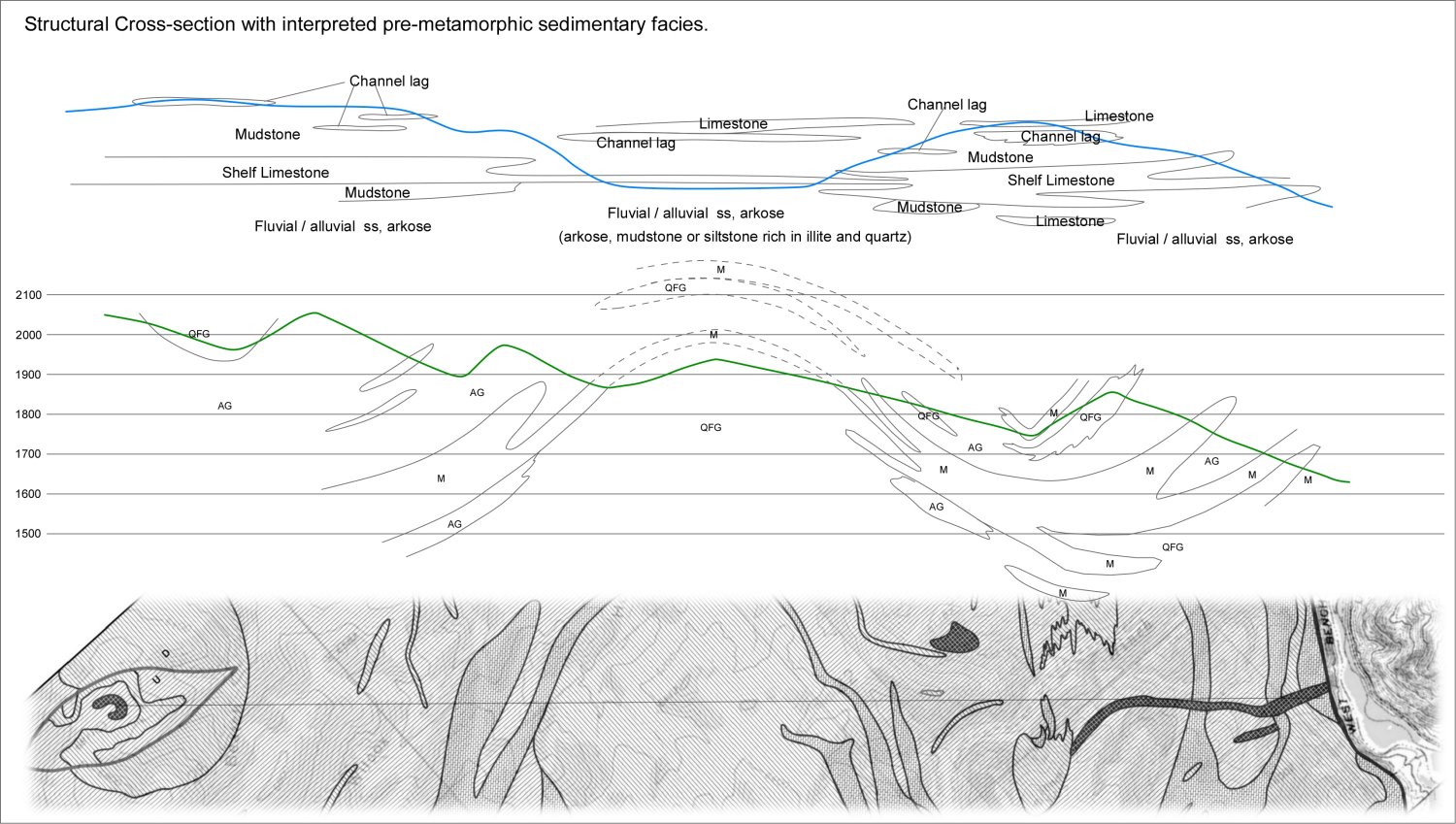
This structure cartoon cross-section and interpreted pre-metamorphic sedimentary section is a new creation for 2021 as I was preparing my thesis for publication. Thirty plus years mucking about in the overburden for Royal Dutch Shell has given me a few insights into sedimentary geoloty. Looking at the geology in profile, it takes little to imagine the sedimentary precursers.

Subsequent work, especially in the main portions of the Ruby Mountains, have provided much more solid evidence for a sedimentary protoliths. Wilson as early as 1981 pointed out "A metasedimentary origin is consistent with the conformable and compositionally variable nature of the gneiss and is plausible for at least the strongly banded micaceous-garnetiferous varieties... Based upon field and geochemical criteria, the quartzofeldspathic gneisses most probably represent a thick package of metamorphosed feldspathic sands or 'greywacke' at least 5 km thick, interstratified with rhyolite, basalt flows and pyroclastic rocks."
Schaefer, 1986 evidenced the concordant contacts against the Dillon Gneiss, interlayered amphibolite and marble, lack of contact effects or skarn associated with marble. Again all pointing to a probably sedimentary protoliths. Finally, Stotter in 2019 citing Jones, C.I., 2008 (reference not in my possession) describes two possible protoliths for the Dillon Gneiss: "either the Dillon Gneiss was formed from arkosic sediments derived from the Beartooth arc terrane, or that the Dillon Gneiss originated as a volcanic ash deposit associated with the 2.78 Ga Beartooth arc".
This is quite late, but time to take my stand and say I am convinced, as I ought to have been from the start, that the entire section studied at Hinch Creek began life as sedimentary units.
kjs
2021